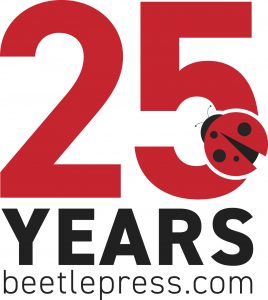Old book still has relevant lessons
When I was in sixth grade, my paternal grandmother passed away and left me her typewriter. I’d already been writing little stories in the notebook she’d given me when I was six—about my brothers, my day, but mostly my cat. That notebook was small, spiral bound and had a fuzzy kitten on the cover. But typing on Ma’s typewriter, with its italicized font, made me feel important. Grown-up.
I began writing thank you notes to my friends and family members. They were extensive and often sought to inform people on the relevant facts of life, like that a cat’s sweat glands are in their paws, and other randomness.
I graduated from writing about the world around me to writing about my fellow students at Walpole High School and then Westfield State College, penning stories for both schools’ newspapers.
Somewhere around 1983, as a college sophomore, I read The Elements of Style, by William Strunk and E.B. White, as part of a writing course. Back then, the only thing I loved about the book was that it was short and easy to read.
Much later, while working at the Springfield Republican—then the Springfield Morning Union, I was gifted the small, unimposing book, of only 52 pages and began to absorb the principles of clear, direct, unfrilly writing. The book also covers everything from commonly misused words like “effect” and “affect,” to rules of punctuation and grammar. It became my go-to desk read.
Ironically, the book affected my income as it also improved my craft. I was a part-time reporter—called a “stringer”—getting paid by the word, so I wrote very long stories. But Strunk teaches that one must “omit needless words” and “make every word tell.” While that lesson was important to learn, it did shrink my paychecks a bit. It was a good investment.
The Elements of Style helped me find my voice. Strunk says we should “write in a way that comes naturally.” That was a freeing learning. As the time, I was a 20-something infant journalist in a large newsroom full of people twice my age with abundant knowledge and experience, so, to have confidence in my work, I tended to puff things up a little. I used fancy words, and wrote long, flowy sentences, even though it didn’t feel natural to me.
The Elements of Style helped me learn to write the way I speak—simply, clearly.
When I moved away from journalism in 1998 and launched Beetle Press, I used my crisp writing to craft messaging for my clients, to tell their stories and help their businesses or nonprofits get noticed.
I frequently revisit resources like The Elements of Style; it is part of what makes me good at what I do. This little book is one I recommend to business or nonprofit leaders who want to create their own content in printed materials and online. It is a quick and easy way to learn a whole lot.
This book was written in 1918, and it still holds up today, which I find impressive. What else has stood the test of time so well in this constantly evolving world?





